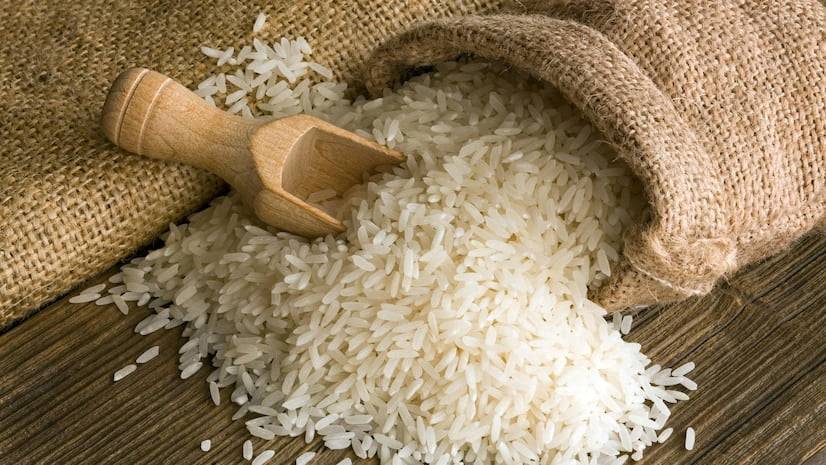Main Points In Hindi (मुख्य बातें – हिंदी में)
-
निर्यात शुल्क में कटौती: भारत सरकार ने उबले चावल पर निर्यात शुल्क को 20% से घटाकर 10% कर दिया है, जिससे देश के भंडार में वृद्धि होने और नई फसल की तैयारी के कारण निर्यात को बढ़ावा मिलेगा।
-
प्रतिस्पर्धी देशों पर असर: निर्यात शुल्क की कमी से भारतीय चावल की कीमतें कम होंगी, जिससे थाईलैंड, वियतनाम, पाकिस्तान, और म्यांमार जैसे प्रतिस्पर्धी देशों को भी अपनी कीमतें घटाने के लिए मजबूर होना पड़ेगा।
-
फसल के क्षेत्र में वृद्धि: प्रचुर मानसूनी बारिश के कारण किसानों ने पिछले वर्ष की तुलना में अधिक क्षेत्र में चावल की खेती की है, जो 41.35 मिलियन हेक्टेयर तक पहुँच गया है।
-
स्टॉक स्थिति: 1 सितंबर 2024 को भारतीय खाद्य निगम में चावल का स्टॉक 32.3 मिलियन मीट्रिक टन था, जो पिछले वर्ष की तुलना में 38.6% अधिक है। यह सरकार को निर्यात प्रतिबंधों में ढील देने की अनुमति प्रदान करता है।
- ब्राउन और छिलके वाले चावल पर बदलाव: ब्राउन चावल और छिलके वाले चावल पर निर्यात शुल्क भी घटाकर 10% कर दिया गया है, जबकि सफेद चावल पर निर्यात शुल्क शून्य कर दिया गया है।
Main Points In English(मुख्य बातें – अंग्रेज़ी में)
Here are the main points from the article regarding India’s rice export policy:
-
Reduction of Export Duty: The Indian government has reduced the export duty on boiled rice from 20% to 10%, facilitating an increase in shipments as the country prepares for a new harvest season.
-
Impact on Competitive Pricing: This duty cut is expected to lower India’s export prices, thereby enhancing its competitiveness in the global market and forcing competing countries like Thailand, Vietnam, Pakistan, and Myanmar to potentially lower their prices.
-
Background on Previous Duties: The initial 20% export duty was imposed due to below-average rainfall affecting crop yields in 2023.
-
Changes to Other Rice Categories: The government has also reduced the export duty for brown rice and husked rice to 10%, while white rice export duties have been eliminated.
- Increased Stock and Agricultural Expansion: As of September 1, 2024, India has a significant stock of 32.3 million metric tons of rice, a 38.6% increase compared to the previous year, supported by favorable monsoon rains, which have led to an expansion in the area under rice cultivation.


Complete News In Hindi(पूरी खबर – हिंदी में)
भारत का चावल निर्यात और आगामी विकास
भारत ने हाल ही में उबले चावल पर निर्यात शुल्क को 20% से घटाकर 10% कर दिया है। यह निर्णय देश में चावल के भंडार में वृद्धि और किसानों द्वारा नई फसल की तैयारी को देखते हुए लिया गया है।
निर्यात शुल्क में कटौती का महत्व
इस कटौती से भारत की निर्यात लागत में कमी आएगी, जिससे भारतीय चावल की प्रतिस्पर्धात्मकता बढ़ेगी। इससे सामान्यतः प्रतिस्पर्धी देशों जैसे थाईलैंड, वियतनाम, पाकिस्तान और म्यांमार को भी अपनी कीमतें घटाने के लिए मजबूर होना पड़ेगा।
2023 में, भारत ने असामान्य मौसम के कारण चावल की फसल पर पड़े प्रभाव के चलते निर्यात शुल्क को 20% करने का फैसला किया था। अब, भंडार बढ़ने और फसल के बेहतर होने के कारण सरकार ने शुल्क कम करने का निर्णय लिया है।
अन्य प्रकार के चावल पर प्रभाव
सरकार ने ब्राउन चावल और छिलके वाले चावल पर भी निर्यात शुल्क को 10% करने की घोषणा की है। यह कटौती तुरंत प्रभाव से लागू हो गई है। इसके विपरीत, सफेद चावल पर निर्यात शुल्क शून्य कर दिया गया है, हालांकि यह स्पष्ट नहीं है कि क्या निजी व्यापारियों को निर्यात की अनुमति दी जाएगी या यह प्रक्रिया केवल सरकारी सौदों तक सीमित रहेगी।


किसानों की स्थिति
इस महीने की शुरुआत में, भारत सरकार ने बासमती चावल के निर्यात के लिए न्यूनतम मूल्य समाप्त कर दिया। यह निर्णय हजारों किसानों की मदद के लिए किया गया, जो प्रमुख विदेशी बाजारों में अपनी उपस्थिति स्थापित करने में कठिनाई का सामना कर रहे थे, विशेषकर यूरोप, मध्य पूर्व और संयुक्त राज्य अमेरिका में।
भंडार की स्थिति
1 सितंबर 2024 तक, भारतीय खाद्य निगम के पास चावल का स्टॉक 32.3 मिलियन मीट्रिक टन था, जो पिछले वर्ष की तुलना में 38.6% अधिक है। यह स्थिति भारत सरकार को चावल निर्यात प्रतिबंधों में ढील देने की अनुमति देती है।
फसल की तैयारी
इस वर्ष किसानों ने 41.35 मिलियन हेक्टेयर में चावल की फसल बोई है, जो पिछले साल 40.45 मिलियन हेक्टेयर तथा पिछले पाँच वर्षों के औसत 40.1 मिलियन हेक्टेयर से अधिक है। यह वृद्धि सामान्य से अधिक मानसूनी बारिश के कारण संभव हुई है।
निष्कर्ष
भारत की नीति में यह बदलाव न केवल देश में किसानों के लिए सहायक होगा, बल्कि अंतरराष्ट्रीय बाजार में भारतीय चावल की प्रतिस्पर्धा को भी मजबूत करेगा। सरकार की ये पहलें कृषि क्षेत्र को नई दिशा देने में महत्वपूर्ण भूमिका निभा सकती हैं। इससे न केवल स्थानीय अर्थव्यवस्था को बल मिलेगा, बल्कि विदेशों में भारतीय चावल की मांग में भी इजाफा होगा।
Complete News In English(पूरी खबर – अंग्रेज़ी में)
On September 27, 2024, the Indian government announced a reduction in the export duty on boiled rice from 20% to 10%. This decision comes as India, the world’s largest grain exporter, has seen an increase in rice stocks, coinciding with farmers preparing for the upcoming harvest.
The decrease in export duty is expected to lower export prices for India, potentially boosting shipments and compelling competitor nations such as Thailand, Vietnam, Pakistan, and Myanmar to also reduce their prices to remain competitive.
Initially, in response to below-average rainfall that affected rice crops in 2023, India imposed a 20% export duty on boiled rice. This new notification from the government also mentioned a reduction in the export duty on brown and husked rice, which has also been set at 10%. This change is effective immediately.
Regarding white rice, the export duty has been eliminated altogether, though the government did not clarify whether private traders would be allowed to export or if it would be restricted to government-to-government agreements only.
Earlier in the month, the government also removed the minimum export price on basmati rice to assist thousands of farmers who had been experiencing difficulties accessing lucrative foreign markets in Europe, the Middle East, and the United States.
As of September 1, the Food Corporation of India reported a rice stock of 32.3 million metric tons, marking a 38.6% increase compared to the previous year, which has provided the government with sufficient capacity to ease rice export restrictions.
Encouraged by abundant monsoon rains, farmers have planted rice on 41.35 million hectares of land, surpassing both last year’s area of 40.45 million hectares and the five-year average of 40.1 million hectares for the primary crop.
In summary, the government’s recent measures to reduce export duties and ease restrictions are aimed at enhancing rice exports and supporting farmers, especially in light of a strong harvest season ahead.
Source link




